Intriguing Hoard Of Bronze Age Bracelets From Brittany, France Remains An Archaeological Puzzle
Conny Waters - AncientPages.com - Three metal deposits were extracted by a detectorist inside the site, dated to the Middle Bronze Age 2 (1450- 1300 BC) at Kerouarn, Prat, in northern Brittany.
Credits: GPLA Arc’Antique / M. Nordez
The ornament hoards dated to to the Middle Bronze Age are composed exclusively of copper-based alloy ornaments. At the site, the archaeologists found a 26m-wide semi-circular area with two curved ditches, separated from each other by a huge entrance.
Pottery analysis and a radiocarbon dating indicates that the ditches and hoards were contemporary.
To date, the site of Kerouarn has yielded the largest number of bracelets (at least 89) and the largest mass of ornaments (15kg) of the Atlantic Middle Bronze Age.
The 89 bracelets constituting the three hoards all have a massive plano-convex or concave-convex section and are decorated with a finely crafted geometric motif.
The most massive bracelet, with hinged locking system (photographs by M. Nordez; tomography by G. Bourbouze).
Most of the bracelets (81) have a closed shape with bulges hiding the ends which are very rare characteristics. Particularly one bracelet (600g) represents the most complex example.
One of the bracelets is penannular (in the form of an incomplete circle (or ring). "Seven others have a mortise-and-tenon locking system, sometimes hinged)."
"There are no contemporary built structures in this 225m2 semi-circular area and this absence cannot be explained by erosion.
Image credit: GPLA Arc’Antique.
This lack of domestic or funerary remains, in combination with the monumentality of this complex, suggests other functions. This partially enclosed (and possibly hidden) place may have been used to bring people together, possibly for ritual, religious and/or socioeconomic purposes.
The hoards may either be the cause of these gatherings or a visible consequence, possibly among others that left no trace," writes researchers in their paper.
Main types of bracelets (photographs by M. Nordez): A) Prat type, with variation in the number of terminal bulges; B) unique open bracelet from the hoards; C) cast residues trapped in the internal side of a locking system. Image credits: (photographs by M. Nordez; tomography by G. Bourbouze).
Further analysis indicates that all the bracelets were made using the lost wax casting technique, like most bracelets of this period.
Interesting are the two characteristics of the bracelets: quantity and remarkable quality.
The bracelets were discovered in a vessel and the diverse stages of manufacture and wear. Many of the artifacts seemed to be unfinished because the craftsmen never completed their manufacturing.
Image credit: GPLA Arc’Antique ; C : M. Nordez
The question remains what the function of these objects was.
Were they intended to serve as ornaments, or did they represent some form of pre-monetary currency? What did stop the manufacturing of the bracelets?
Several sites with multiple hoards are known in Brittany and all date from the Late Bronze to the Early Iron Age.
However, the Kerouarn discovery of the bracelets is particularly interesting.
This site has already yielded artifacts from the Middle Neolithic to the present day, including an important enclosed settlement from the Late Iron Age.
The largest number of bracelets (at least 89) and the largest mass of ornaments (15kg) of the Atlantic Middle Bronze Age was found at this site. During the Atlantic Bronze Age, there were a number of distinct regional centers of metal production, and many of the major ones were in north-western France.
The Kerouarn excavation data is still analyzed, and it will be presented in detailed publication regarding the archaeological context, hoarding practices, the ornaments, and the lost-wax casting technique. The latter is one of the oldest known metal-forming techniques but is still widely used for producing jewelry and art.
Based on original source
Written by Conny Waters - AncientPages.com Staff Writer
Copyright © AncientPages.com All rights reserved. This material may not be published, broadcast, rewritten or redistributed in whole or part without the express written permission of AncientPages.com
More From Ancient Pages
-
 Jelling Stone And Legendary Harald ‘Bluetooth’ King Of Denmark – ‘Who Made The Danes Christian’
Featured Stories | Oct 10, 2015
Jelling Stone And Legendary Harald ‘Bluetooth’ King Of Denmark – ‘Who Made The Danes Christian’
Featured Stories | Oct 10, 2015 -
 What Caused The Year Without A Summer In 1816?
Ancient History Facts | Sep 17, 2018
What Caused The Year Without A Summer In 1816?
Ancient History Facts | Sep 17, 2018 -
 Tragic Tale Of The Cursed House Of Atreus
Featured Stories | Apr 12, 2021
Tragic Tale Of The Cursed House Of Atreus
Featured Stories | Apr 12, 2021 -
 Egtved Girl’s Unique 3,400-Year-Old Style Of Dress
Featured Stories | Nov 17, 2023
Egtved Girl’s Unique 3,400-Year-Old Style Of Dress
Featured Stories | Nov 17, 2023 -
 Perchta: Evil Witch Of The Alps – An Old Tradition That Still Continues
Ancient Traditions And Customs | Dec 15, 2019
Perchta: Evil Witch Of The Alps – An Old Tradition That Still Continues
Ancient Traditions And Customs | Dec 15, 2019 -
 Ship-Shaped Burial Of Tjelvar – Legendary First Man Who Brought Fire To Gotland
Featured Stories | Feb 25, 2021
Ship-Shaped Burial Of Tjelvar – Legendary First Man Who Brought Fire To Gotland
Featured Stories | Feb 25, 2021 -
 Neanderthals Cared For Each Other And Survived Into Old Age – Study Shows
Evolution | Nov 2, 2023
Neanderthals Cared For Each Other And Survived Into Old Age – Study Shows
Evolution | Nov 2, 2023 -
 Mysterious Ancient Human Skeletons Found In Florida Lake Puzzle Archaeologists – Unknown Lost Settlement?
Featured Stories | May 21, 2024
Mysterious Ancient Human Skeletons Found In Florida Lake Puzzle Archaeologists – Unknown Lost Settlement?
Featured Stories | May 21, 2024 -
 Unknown Ancient History Of Antarctica And It’s Lost Civilization – Secrets Beneath The Ice
Featured Stories | Sep 7, 2015
Unknown Ancient History Of Antarctica And It’s Lost Civilization – Secrets Beneath The Ice
Featured Stories | Sep 7, 2015 -
 Din Lligwy: Prehistoric Celtic Settlement Of Anglesey, Wales
Featured Stories | Dec 3, 2022
Din Lligwy: Prehistoric Celtic Settlement Of Anglesey, Wales
Featured Stories | Dec 3, 2022 -
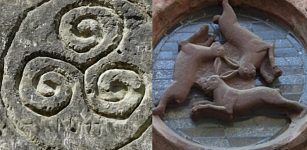 Triskelion – Millennia Old Traditional Symbol Used In Many Cultures Around The World
Ancient Symbols | Dec 13, 2018
Triskelion – Millennia Old Traditional Symbol Used In Many Cultures Around The World
Ancient Symbols | Dec 13, 2018 -
 Rome’s Most Wanted Enemy – Poison King Mithradates Murdered 80,000 Roman Civilians
Ancient History Facts | Dec 17, 2017
Rome’s Most Wanted Enemy – Poison King Mithradates Murdered 80,000 Roman Civilians
Ancient History Facts | Dec 17, 2017 -
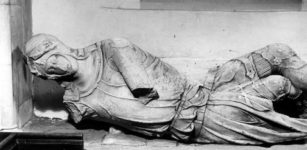 Aldworth Giants: Knights Who People Tried To Erase From History
Featured Stories | Jul 2, 2015
Aldworth Giants: Knights Who People Tried To Erase From History
Featured Stories | Jul 2, 2015 -
 The Sumerian King Who Received A Divine Tablet With Secrets Of The Gods And Changed History Of Mesopotamia
Featured Stories | May 30, 2021
The Sumerian King Who Received A Divine Tablet With Secrets Of The Gods And Changed History Of Mesopotamia
Featured Stories | May 30, 2021 -
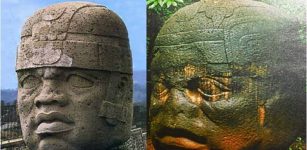 The Olmecs – Who They Were, Where They Came From Still Remains A Mystery
Civilizations | Feb 19, 2015
The Olmecs – Who They Were, Where They Came From Still Remains A Mystery
Civilizations | Feb 19, 2015 -
 Lemminkainen: Mythical War-Hero Of Finnish Great Epic ‘Kalevala’
Featured Stories | Oct 14, 2016
Lemminkainen: Mythical War-Hero Of Finnish Great Epic ‘Kalevala’
Featured Stories | Oct 14, 2016 -
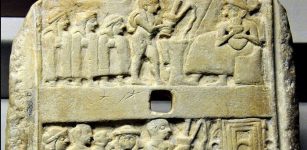 Ur – One Of The Largest And Most Important Cities Of Ancient Mesopotamia
Featured Stories | Jul 28, 2021
Ur – One Of The Largest And Most Important Cities Of Ancient Mesopotamia
Featured Stories | Jul 28, 2021 -
 Atomic Theory Was Invented 2,600 Years Ago By Acharya Kanad – A Genius Ahead Of His Time
Featured Stories | May 15, 2014
Atomic Theory Was Invented 2,600 Years Ago By Acharya Kanad – A Genius Ahead Of His Time
Featured Stories | May 15, 2014 -
 Hephaestus (Hephaistos) – God Of Fire And Master Craftsman Constructed Talos, First Greek Robot And Divine Weapons Of The Gods
Featured Stories | Jul 7, 2018
Hephaestus (Hephaistos) – God Of Fire And Master Craftsman Constructed Talos, First Greek Robot And Divine Weapons Of The Gods
Featured Stories | Jul 7, 2018 -
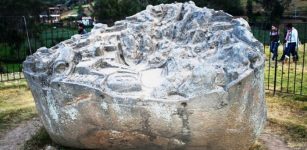 Puzzling Huge Ancient Sayhuite Monolith In Peru Remains An Unsolved Mystery
Civilizations | Jul 23, 2016
Puzzling Huge Ancient Sayhuite Monolith In Peru Remains An Unsolved Mystery
Civilizations | Jul 23, 2016





